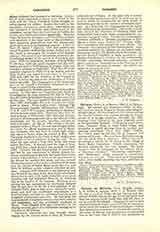

Carreno de Miranda, JUAN, Spanish painter, b. at Aviles in Asturia, 1614; d. at Madrid, 1685. He was a pupil of Pedro de Las Cuevas and Bartolome Roman, but at the age of twenty knew more than his masters could teach him, and left them to set up a studio for himself. Velazquez is said to have interested himself to gain permission for the young artist to study the frescoes of the royal palaces; Carreno then obtained a commission to decorate the mirrors in the palace of Alcazar, and his talents so recommended him to the Court that in 1660 he was appointed by the king as court painter (pintor de camara), a position he retained under the next king, Charles II. He was a man of particularly happy, peaceable disposition, full of generosity, and an immense favorite with his pupils and friends. His work is tender, suave, and of pure, fresh coloring, and in his particular method he is only surpassed by Murillo. Unfortunately, he was too much given to imitating the work of Velazquez, and, although his portraits are powerful and truthful likenesses, their resemblance in general pose to those of the master force them to challenge the incomparable works of Velazquez, to the obvious detriment of Carreno. His strongest portrait is that of Prince Pedro Ivanovitz Potemkin, Ambassador from the Emperor of Russia to the Court of Spain, a full length figure in red, and he painted three portraits of Charles II, lifelike representations of the child-king. He executed several etchings. His best paintings are to be seen at Madrid, St. Petersburg, Pamplona, Valenciennes, and Vienna. Palomino gives a long account of his pictures in Alcala, Segovia, and Pamplona, but very little about the artist himself. He was responsible, with Francisco Ricci, for the decoration of the celebrated cupola of San Antonio de los Portugueses, and the same two artists collaborated in painting the “Magdalen in the Desert” for the Convent of Las Recogidas.
GEORGE CHARLES WILLIAMSON

